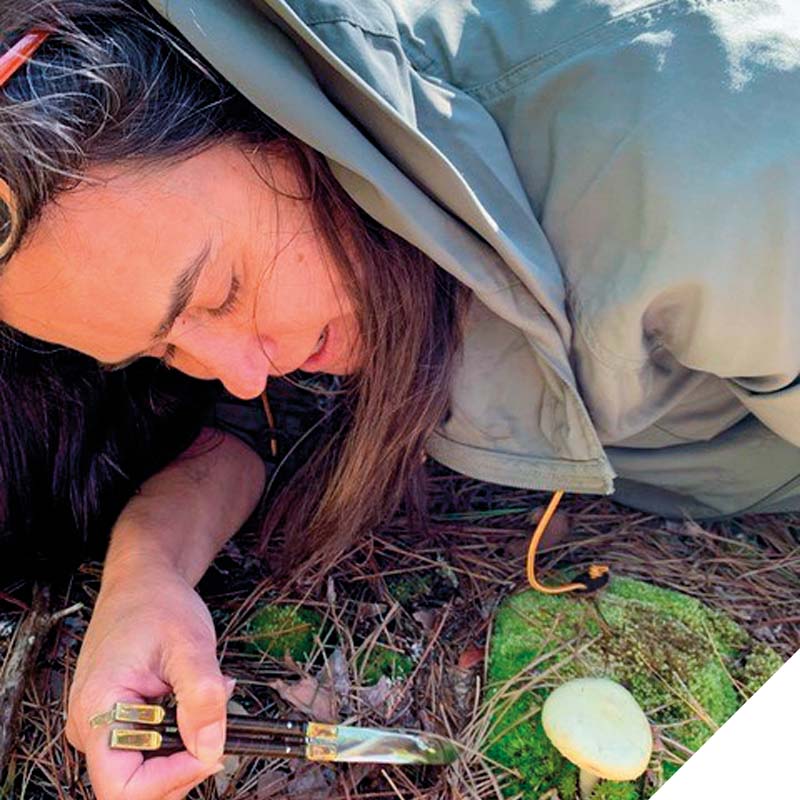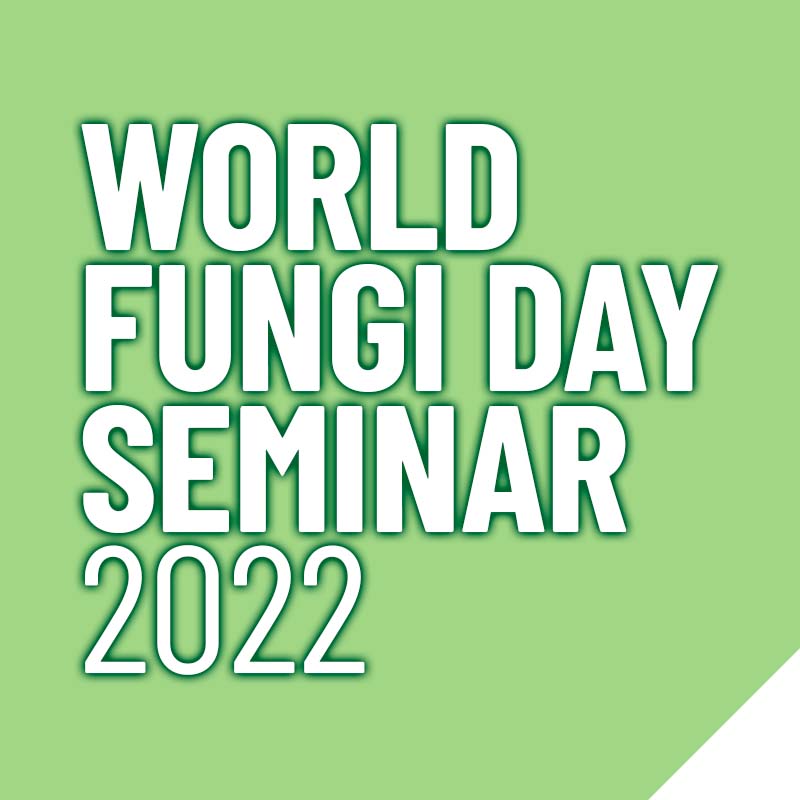Speakers and Programme

Jonathan Plett
Senior Lecturer in Plant: Microbe Interactions, Western Sydney University, Australia.
Decoding the Language of Mycorrhizal Fungi
All interactions between living organisms are governed by communication, be this the exchange of simple chemicals to proteins to complex vocalizations. Within the study of human communication, language is bound by grammar and syntax: the rules governing the general use of language and the finer study of how sentences are put together, respectively. In the interaction between plants and microbes we can identify hundreds of fungal signals that may be used to ‘communicate’ with a host. What these lists do not tell us, however, is the function of these signals. Therefore, by characterizing microbial signals, we may begin to understand the “grammar” and “syntax” of plant-microbe communication. In this talk, I will cover our work into identifying the proteomic and metabolomic signals used by fungi during the interaction with their host plant. I will specifically focus on two model interactions: the mutualistic symbiosis between Pisolithus and Eucalyptus and contrast this with the pathogenic symbiosis between Armillaria and Eucalyptus. By comparing these two systems, I will conclude with our current theories upon how mycorrhizal fungi may communicate differently with their hosts than pathogens and how perception of these different fungal “languages” by the plant impacts the ultimate fate of the interaction.
Biography
Dr Jonathan Plett currently holds a Senior Lectureship at Western Sydney University in plant-microbe interactions. Dr. Plett did his PhD at Queen's University in Canada followed by a post doctoral research position at L'Institut National de la Recherche Agronomique (INRA), France. One of the main aims of his research is to functionally characterizing the protein-based language that coordinate symbiosis between soil-borne mycorrhizal fungi and plants – an interaction that is essential for the continued health and productivity of forests and agriculture. Dr. Plett specializes in combining a range of different techniques from molecular biology and biochemistry to achieve his research goals. The outcome of this research will be a better understanding of the biological mechanisms used by fungi that ultimately benefit plants that can be leveraged in future to mitigate the negative effects associated with climate change.

Alvin Tang
Lecturer, College of International Education, Hong Kong.
Fungal Diseases in urban trees: diagnosis, treatment and management
Urban tree stress refers to trees that are having shorter life spans due to living in urban environments where growing conditions are less than ideal. Under these conditions, trees are more susceptible to certain fungal diseases. This study will summarize the proportion, appearance and potential pathogenicity of different fungal species isolated from symptomatic and asymptomatic urban trees over the past few years. Management strategies for trees growing in different location types will also be discussed.
Biography
Dr Alvin Tang’s research interests lie primarily in the areas of plant disease, tree management, fungal taxonomy and mushroom poisoning. The findings of his work have contributed to a better understanding of tree diseases and at the same time have helped to establish more effective management measures to reduce the risk of tree failure, which in turn helps to safeguard public safety in urban areas. He has established a close relationship with different government departments – especially the Tree Management Office of the Development Bureau, the Highways Department and Housing Authority – to understand their pressing concerns related to tree management and to conduct research to support their management regime and provide them with more options.

Peter Mortimer
Professor, Kunming Institute of Botany, Chinese Academy of Sciences (CAS), Kunming, China.
A decade of fungal forays in the forests of Asia
Over the past decade Peter and his research team have spent much of their time searching for mushrooms in the remote forests of Asia, which have proven to be ideal hunting grounds for anyone interested in mushrooms. This region is characterized by a diverse range of landscapes and climatic zones, providing tropical rainforests in the south, and alpine and temperate forests in the north. This combination of changing landscapes, climates, and forests is the perfect formulae to create one of the global hotspots in fungal diversity, yet, many parts of this region remain unstudied, or simply inaccessible. During the course of this presentation, Peter will share some insights into the ecology and distribution of mushrooms in this region, and highlight some of the more interesting discoveries that have been made along the way. You will also get a glimpse of the wonderful landscapes, people, and mushrooms found in these forests, and just how integral mushrooms are to the lives of the people who live here.
Biography
Prof Peter Mortimer is a soil ecologist for the Kunming Institute of Botany, Kunming, China. After having completed his PhD in ecophysiology at the University of the Western Cape in South Africa, Peter took up his current position in Kunming where he runs the Soil Biology Group. The group researches various aspects of soil ecology, but the main focus is mycology, including the ecology of macro and microfungi, fungal biogeography, and taxonomy. In addition, Peter and his research team work on the documentation of traditional knowledge relating to the use and trade of mushrooms, and how mushrooms can be used as a means of rural development in Asia. Over the last 10 years, Peter’s work has retained a regional focus, with projects in China, Thailand, Vietnam, Myanmar, Laos, and India. He has participated in the discovery and description of hundreds of new species of fungi, the domestication of numerous species of edible or medicinal mushrooms, and conducted training programs on the safe use of wild mushrooms in rural parts of the region. Currently, Peter and his team are busy finalizing a detailed view of the biogeography of above and below ground fungi of the Greater Mekong Subregion, and how climate change is likely to impact the distribution of fungi within this region.

Phan Chia Wei
Senior Lecturer, Faculty of Pharmacy, Universiti Malaya.
Mushrooms: Treasures for Human Health
Vikineswary, S1 and Phan Chia Wei12
Mushrooms are macrofungi that produce visible fruit bodies above or below the ground and that are large enough to be picked by hand. Mushrooms play a signature role in the environment – as recyclers in the carbon cycle. Mushrooms since ancient times have been not only a culinary delight but also known for its nutritional and medicinal attributes. Mushrooms are packed with nutrients including macro and micronutrients that are much needed in a healthy diet. Recent trends related to human health is for prevention or to reduce the severity of human ailments. The ethnomycological knowledge on medicinal mushrooms spans over centuries and the Ganoderma spp. (resihi mushroom) is a classic example of potent inedible medicinal mushrooms. In recent years, research has intensified to scientifically validate the many ethnomycological pharmacological and non-pharmacological claims. Further, forest to market studies involves tapping the wild resources and domestication of potential wild mushrooms to commercial scale. Not all mushrooms are edible. Mushroom poisoning is often reported as incidences of the consumption of wild harvested similar looking mushrooms. In this talk, examples of culinary and medicinal mushroomsthat have been domesticated and commercially grown as well as poisonous mushrooms will be discussed.
1Mushroom Research Centre, Institute of Biological Sciences, Faculty of Science, Universiti Malaya, 50603 Kuala Lumpur, Malaysia;
2Department of Pharmaceutical Life Sciences, Faculty of Pharmacy, Universiti Malaya, 50603 Kuala Lumpur, Malaysia;
Biography
Dr Phan obtained his honours degree in Microbiology (UKM) and PhD (Biotechnology) from UM in 2015. He joined UCSI as an Assistant Professor before joining UM in 2017. He is currently a Senior Lecturer in the Department of Pharmaceutical Life Sciences in Faculty of Pharmacy, as well as the Head of Clinical Investigation Centre (CIC) in University Malaya Medical Centre. Dr Phan has been involved in teaching Microbiology, Immunology, Pharmacology, and Biotechnology and is the recipient of three medals (2 bronze and 1 silver) in academic competitions. His research interest revolves around natural products (mushrooms) as well as on the mechanisms of action and pharmacological complications of neurodegenerative and inflammatory diseases. Collectively, his various projects have resulted in more than 40 original ISI publications and several chapters in books. Dr Phan is also actively involved in various international and national bodies like the Young Scientists Network-Academy of Sciences Malaysia (YSN-ASM) and Asian Federation of Biotechnology (AFOB).

Bernard Slippers
Founding Director of Future Africa. Director of the Forestry and Agricultural Biotechnology Institute (FABI), South Africa.
A ‘worldwide web’ of tree pathogens: Causes, consequences and possible solutions
The rate of emergence of invasive tree pathogens continues to increase. This is despite the development of increasingly strict biosecurity measures during the course of the past two decades. Population genetics studies have shown that many of these pathogens have seemingly unstructured global populations, forming a “worldwide web” of some species. In some of these cases, the lack of population genetic structure can only be explained through repeated and persistent introductions over time. The scale and frequency of these introductions increases the threat that these invasions pose, for example through increasing rates of evolution of these pathogens and their potential to overcome host resistance and to adapt to varying environmental conditions. Studies in my research group have focused on tree pathogens in the fungal order Botryosphaeriales. I will reflect on the diversity of these fungi on iconic and important tree species in Africa, and how the populations of some of these microbes are connected to those on other plants in all corners of the world. The most common and widespread of these species appear to be synanthropic, have wide host ranges and commonly persist as latent infections in healthy plant material. These observations offer potential approaches to address the threat of invasive pathogens.
Biography
Bernard Slippers is the Director of the Forestry and Agricultural Biotechnology Institute (FABI) and Innovation Africa at the University of Pretoria. He is a Professor in the Department of Biochemistry, Genetics and Microbiology. Bernard is fascinated by biological diversity in all its forms, its causes and consequences, and in particular how this diversity impacts the interactions between these organisms in a changing global context. In this regard, he studies the molecular and chemical ecology, evolution and management of insects and micro-organisms that affect plant health. He has published more than 260 papers in international journals, books and book chapters, for which he has appeared on the Clarivate Highly Cited list. He has trained more than 80 postdoctoral, PhD and MSc candidates and fellows. He is also involved in science development as founding member and leader of the South African and Global Young Academies, the Africa Science Leadership Programme and the UP Future Africa Institute

Anne Pringle
Vilas Distinguished Achievement Professor in the Departments of Botany and Bacteriology at the University of Wisconsin, Madison.
The Problem Of Invasive Mycorrhizal Fungi
As global change reshapes Earth’s biodiversity attention is focused on plants and animals and the diseases that kill them. Nearly ignored are the changing distributions of other microbes, including symbiotic fungi. The ectomycorrhizal death cap Amanita phalloides is native to Europe and invasive in North America. Long ago, Herbert Baker articulated his vision of an “ideal weed”: using a few species as case studies (e.g. the plant Ageratum conyzoides), he identified the characteristics of invasive plants. An “ideal” weed would grow quickly, flower rapidly and reproduce copiously; it might possess allelochemicals; it would be self-compatible but not completely so. Taking a similar approach, we are using the death cap as a model to articulate an “ideal” fungal invasive, basing analyses on population genomics data generated from an invasive Californian population and from across the European range. We have discovered death caps use vegetative growth, perennial reproduction, and copious sporulation as tools to spread. The secondary metabolites underpinning the death cap’s toxicity are hypothesized to defend against insects, nematodes, and other animals. We have discovered these toxins are as diverse in California as they are in Europe, and the MSDIN genes underpinning toxicity experience strong natural selection. The dynamic evolution of the MSDIN pangenome underscores its potential to mediate ecological interactions. Finally, death caps use multiple strategies to reproduce, and in the invasive range we find mushrooms generated from mycelia made up of a single nucleus (homokaryons) as well as mushrooms produced from canonical dikaryotic mycelia. Ours is the first observation of “mushrooms without mating” in nature. The distinctive features of invasive A. phalloides echo the characteristics of an “ideal weed”, and parallels between the two kingdoms enable identification of general rules.
Biography
Anne Pringle was born in Kuala Lumpur, Malaysia, and spent her childhood traveling through Southeast Asia and West Africa. She has spent her research and teaching life in the USA and is currently at the University of Wisconsin, Madison, where she is now Vilas Distinguished Achievement Professor in the Departments of Botany and Bacteriology. She was president of the Mycological Society of America in 2019. Anne is a fungal evolutionary biologist and ecologist, with a wide range of interests, including lichens, mycorrhizas, spore dispersal and slime mould networks. She is currently on sabbatical in South Africa.

Karina Clemmensen
Associate Professor at the Swedish University of Agricultural Sciences, Sweden
Boreal forest trees and mycorrhizal fungi – the belowground story
Life in the northern evergreen forest is adapted to a cool climate and a marked seasonality. This results in shortage of available soil nutrients and boreal trees associate with hundreds of species of ectomycorrhizal fungi to improve nitrogen uptake. Mycorrhizal fungi receive carbon directly from the tree roots and grow as delicate mycelia into the soil. Here they spend the carbon immediately to mobilize nutrients or to fight competitors, or they may store carbon for a long time. Considering ongoing climatic changes, it is important to understand how mycorrhizal fungi affect belowground carbon storage in the boreal forest. This talk will follow the journey of carbon fixed by the tree, through roots and mycorrhizal mycelia into the soil, and discuss how mycorrhizal fungi may determine whether carbon is returned to the atmosphere or stored belowground for a long time.
Biography
Karina Clemmensen is a fungal ecologist particularly interested in how mycorrhizal fungi interact with canopy trees and understory shrubs to shape the characteristic boreal forest ecosystem. Karina Clemmensen received her PhD degree from University of Copenhagen and then moved to Sweden for a Marie Curie fellowship in 2008. She is now associate professor at Swedish University of Agricultural Sciences.

Paola Battilani
Professor in Plant Pathology at Department of Sustainable Plant Production Sciences, Italy
The harmful aspect of fungi: mycotoxin production
Fungi are naturally occurring microorganisms that find a suitable condition in growing on plant to adsorb nutrients, sometimes on products of animal origin, like cheese or ham. Fungi are not visible since when they produce moulds or cause symptoms on host plant. Some fungi are beneficial, but some of them produce bioactive compounds called mycotoxins. The interested towards mycotoxins id high because of their acute and chronic toxicity, mainly after ingestion, for humans and animals. Cereals, nuts, coffee, , grapes are among the host crops of mycotoxin producing fungi. Mycotoxins are very stable and cumulate in time during crop growing, they survive common processing operation, therefore they can be found in raw materials so as in their derivatives. Frequently mycotoxins are associated to a cryptic life of fungi, not combined with visible symptoms or signs on plants or plant products. For long time the reason because fungi produce mycotoxins was unknown, but it is now partly clarified, and it relates to competition and interaction with the host plant. Scientists have a good base of knowledge to understand mycotoxin producing fungi and prevent mycotoxin occurrence in food and feed, even if it is not a statement applicable worldwide.

Kevin Newsham
Research scientist at the NERC British Antarctic Survey (BAS) in Cambridge, UK.
Fungi in polar regions and their responses to climate change
Polar regions are exposed to some of the harshest conditions for life on Earth. They are also currently subjected to rapid climate change. Here, I’ll outline the environmental conditions encountered by terrestrial fungi in polar regions, how these conditions shape fungal communities and the strategies used by fungi to grow and survive in polar environments. I’ll also describe climate change at the poles and its effects on the environment, and detail experiments in the southern maritime Antarctic and High Arctic aimed at understanding how soil fungi will respond to increased temperature and precipitation. Some of the day-to-day challenges of working in polar regions – such as encounters with Arctic wildlife and camping on Antarctic glaciers – will also be explained.
Biography
Kevin Newsham is a research scientist at the NERC British Antarctic Survey (BAS) in Cambridge, UK. Trained in microbiology in the 1980s at the University of Wales College, Cardiff, he has studied mycology for over three decades, with his main interest being in soil fungal responses to environmental change. After joining BAS in 1997, he spent nine summer seasons working in Antarctica, often under canvas on Alexander Island. Since 2010, he has worked at the international research community at Ny-Ålesund on Svalbard in the High Arctic, and in 2014–2017 was an adjunct professor in Arctic mycology at the University Centre in Svalbard. In 2018, he was awarded the polar medal by Her Majesty The Queen for his outstanding achievement and service to the United Kingdom in the field of polar research.

Natalia Vargas Estupiñan
Los Andes University, Colombia
Phylogeny of the genus Amanita associated to Quercus humboldtii in Colombia
In Colombia, most studies related to macrofungi have been assessed in the native oak species Quercus humboldtii given the high fungal diversity reported in these ecosystems. These forests are distributed in the three cordilleras of Colombia and establish symbiotic relationships with ectomycorrhizal fungi. My talk will treat a summary of ectomycorrhizal species associated to native oak (Quercus humboldtii), the phylogeny of species in the genus Amanita, and the history of introduction of the Eurasian fungus Amanita muscaria with pine plantations. The use of local inocula made up of native fungi to arrest the spread of invasive species will also be discussed.
Biography
Natalia is a microbiologist who started to get involved in the fungal world when they took their first class of fungal biology; observing fungal structures under the microscope and learning about the physiology, the growth and the strategies that fungi use to adapt to the environment caught her interest. She did her masters working with taxonomy and toxicity of species in the genus Amanita in Colombia, and learned about the diversity of macrofungi associated to the native Quercus humboldtii oak forests. During the PhD program, she assessed the phylogeny of Amanita species from Colombia, the introduction of the ectomycorrhizal A. muscaria with pine plantations and alternatives to promote the use of local inocula to avoid the spread of invasive mycorrhizae.

Betsy Arnold
Professor and Curator, RLG Mycological Herbarium - School of Plant Sciences, USA
Discovering the hidden world of fungi in leaves: endophytes and their importance in a changing world
When we pause and look around us, we see that the vibrant greenery of plants greatly improves our world. Yet when we peer inside these plants, we find that they are more than meets the eye: within their healthy tissues live diverse and little-known communities of fungi. Those that occur in leaves populate a biochemically dynamic, often ephemeral landscape in which they trade carbon for a variety of chemical currencies that, individually and together, help protect leaves from stress, herbivores, and disease. Who are these fungi, and how is it that they have evolved to live within the primary photosynthetic organs of plants? What do they do, and how can their uses contribute to the sustainability of diverse ecosystems on which humans depend? In this presentation we will explore together the diversity and functions of leaf-inhabiting microfungi, traversing molecular to landscape scales as we tour the biological richness that occurs in the green world around us.
Biography
Betsy grew up in the Sonoran Desert and mountains of the southwestern United States. She came to ecology, and then mycology, from an appreciation of biodiversity. After graduating with a BS in Science from Duke University in 1995, she worked for a year at the Smithsonian Tropical Research Institute in Panama, where she became intrigued by endophytes. She earned a PhD in Ecology and Evolutionary Biology as a National Science Foundation Graduate Fellow at the University of Arizona in 2002, where she studied endophytes associated with leaves of tropical trees. She was a NSF Microbial Biology Postdoctoral Fellow at Duke University for two years, where she expanded her research program to include molecular biology of endophytes from many biomes. In 2005 she joined the faculty of the University of Arizona's School of Plant Sciences and became Curator of the Robert L. Gilbertson Mycological Herbarium. In her faculty role Betsy has mentored diverse students in research while teaching courses in mycology and ecology. Her lab group is active in outreach, recognizing the need to engage and support diverse learners on their journeys in science. She has authored over 150 peer-reviewed papers and has been recognized with awards for diversity and inclusion, teaching, and scientific excellence from the Mycological Society of America and the International Mycological Association.

Allison Walker
Director of Acadia’s E.C. Smith Herbarium, Wolfville, Canada
A Deep Dive Into the Ecology of Marine Fungi
From salt marshes to mangroves, tidal mud flats and sand beaches to rocky intertidal zones, seagrass beds to the deep sea, unexplored diversity and ecology await. Join us as we discuss marine fungal friends and foes, and their interactions with other coastal and marine organisms. Driftwood decomposers, salt marsh symbionts, coral pathogens and even marine lichens: some fungal interactions thrive in salty habitats!
Biography
Canadian mycologist Allison Walker received her mycological training with David Malloch (University of Toronto) and Cathie Aime (USDA ARS Systematic Botany and Mycology Laboratory, USA), followed by MSc and PhD studies with Jinx Campbell in Marine Mycology (University of Southern Mississippi, USA) and postdoctoral training with Keith Seifert (Agriculture and Agri-Food Canada) and David Miller (Carleton University) in Ottawa, Canada. Since 2014, she and her Fungal Dream Team at Acadia University in Nova Scotia have been studying marine and coastal fungal biodiversity and ecology on the Bay of Fundy (or is it the Bay of Fungi?). She currently serves as Director of Acadia’s E.C. Smith Herbarium, as Editorial Board Member for the journals Fungal Ecology & Mycologia, and as Councilor for Systematics and Evolution for the Mycological Society of America. In 2021 she co-founded a Virtual Working Group on Canadian Fungal Conservation, with support from the Canadian Institute of Ecology and Evolution.